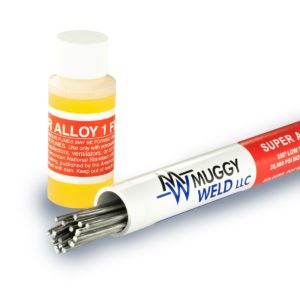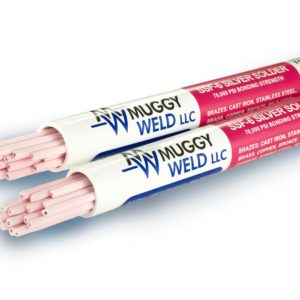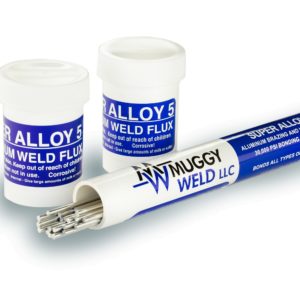How to Repair Zinc, Pewter or Pot Metal Jewelry Without Damage
Oftentimes, our best video demonstrations come from spontaneous interactions with total strangers in need of help. Case in point:
A woman approached Mike at a local classic car/antique auto show in Portland and asked if he could repair her broken jewelry piece. She shared that her daughter had given her the a necklace and matching earrings, the necklace had fallen off, dropped into a gutter and broke, and she was missing a piece of the pendant. She didn’t have the missing piece, but that’s not a problem with Super Alloy 1 multi-metal solder, which bridges gaps very well.
Mike has repaired belt buckles and rings in the past to help people save heirlooms or precious gifts from loved ones, so he was more than happy to help.
Notice in the video that he pointed the flame to the very end of the part to be repaired and the necklace itself was still cold to the touch. He did not want to heat the entire piece in an effort to avoid heat damage to the precious stone.
The jewelry was made of either pot metal, zinc die cast, or pewter–all very low melting temperature metals. Fortunately, Super Alloy 1 joins all these metals alone or in any combination at only 350°F at and only can be applied with any heat source–propane (shown), soldering gun, heat gun etc, making this jewelry repair a quick and simple task.
Remember the technique: remove oxidation with a grinder or sander, preheat the parent metal, dip the rod into the flux and apply it to the ends of the pendant, then apply the filler rod. Mike used the 3/32 diameter rod and bridged the gap with the solder itself, then used the flux to flow it out and shape the pendant loop. Excess flux was removed with warm water and a wire brush, and this repair “no jewelry store would touch” was completed in a matter of minutes, with less than $1 of Super Alloy 1.
Note: Please observe all AWS Safety & Health Guidelines when using Muggy Weld products.



